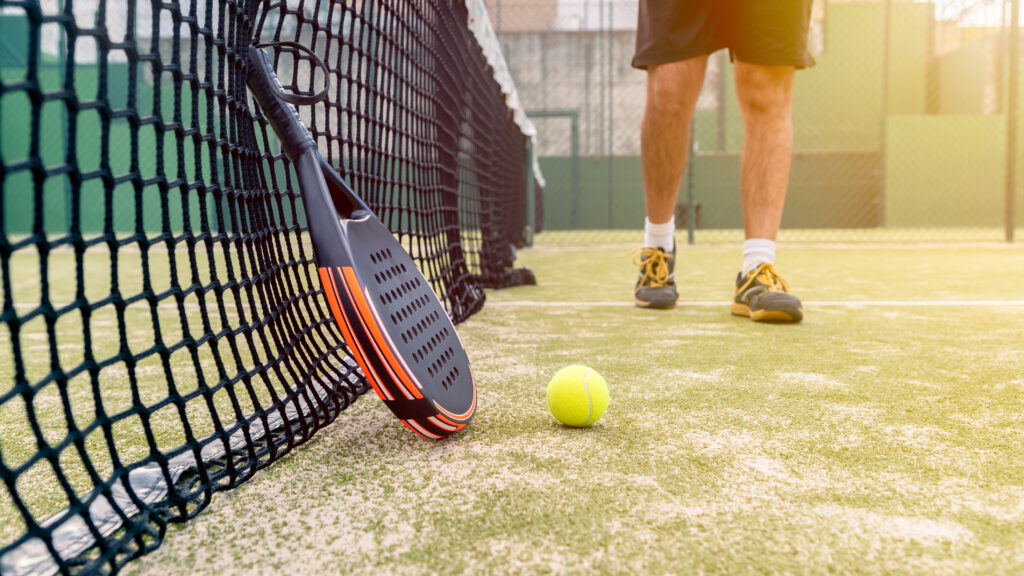Most Common Tennis Injuries and How to Prevent Them

Common Tennis Injuries and How to Prevent Them
Summer brings countless opportunities to enjoy outdoor activities, and tennis is a fantastic choice. It’s a high-energy aerobic sport that engages many parts of the body and helps you stay in shape. Tennis offers proven health benefits, including improved cardiovascular fitness, balance, motor control, hand-eye coordination, bone strength, and flexibility. However, injuries can occur at all skill levels — from beginners to pros. Below, we describe some of the most common tennis injuries and tips to avoid them.
Tennis can be played on clay, grass, or hard courts and requires speed, power, balance, and coordination. Unfortunately, the combination of these factors — along with the repetitive nature of the sport — increases the risk of injuries to the elbow, wrist, knees, and ankles.

Rotator cuff tendinitis
The rotator cuff is a group of muscles and tendons that surround the shoulder joint, allowing for multi-directional motion and stability. Rotator cuff tendinitis occurs when these tendons become inflamed, resulting in pain with overhead movements and limitations in shoulder motion and function.
Rotator cuff tendinitis is often caused by excessive overhead serving. Changing your technique to increase the angle between your arm and your side to more than 90 degrees will decrease tendon strain and minimize the chance of injuring your rotator cuff. Additionally, making contact with the ball overhead when it is slightly in front of you, as opposed to directly above or behind you, also will lessen the strain on these tendons.
Similar to tennis elbow, the first line of treatment is rest, ice, and NSAIDs. Physical therapy to improve the range of motion and strength of the rotator cuff muscles is important in returning to activities.
Rotator Cuff Tendinitis
Rotator cuff tendinitis occurs when the tendons surrounding the shoulder joint become inflamed, affecting motion and stability. This condition causes pain during overhead movements and limits shoulder mobility. Excessive overhead serving or improper technique are common causes.
To prevent and treat rotator cuff tendinitis, adjust serving technique to increase the angle between your arm and your side to more than 90 degrees and make overhead contact slightly in front of your body. Rest, ice, and NSAIDs (non-steroidal anti-inflammatory drugs) can help. Physical therapy to improve shoulder range of motion and strengthen the rotator cuff muscles is essential to a safe return to play.

Ankle Sprain
An ankle sprain, also known as a twisted or rolled ankle, occurs when ligaments around the ankle are stretched or partially torn. Immediate treatment involves the PRICE procedure — Protection, Rest, Ice, Compression, and Elevation. Physiotherapy is important for rehabilitation to strengthen ankle ligaments and prevent future injury. Wearing proper tennis footwear designed for multi-directional movement is also essential for prevention.
Preventing Tennis Injuries
Many tennis injuries result from overuse. You can minimize or prevent them with proper conditioning and technique. Maintain fitness and flexibility with sport-specific conditioning, wear appropriate footwear and equipment, warm up and stretch before playing, and cool down afterward. Avoid over-repetition of a single shot by practicing a variety of strokes. Strengthening arms and core muscles is important, and having your technique evaluated by an expert can ensure your gameplay is safe and efficient.
Schedule Your Appointment with Health Plus Physical Therapy
At Health Plus PT, we help athletes understand the most common tennis injuries and how to prevent them. From tennis elbow to shoulder strain, our expert guidance includes proper warm-ups, technique tips, and targeted exercises. Many patients find these strategies reduce injury risk and improve performance on the court.
Contact us today to get started and book your appointment!
